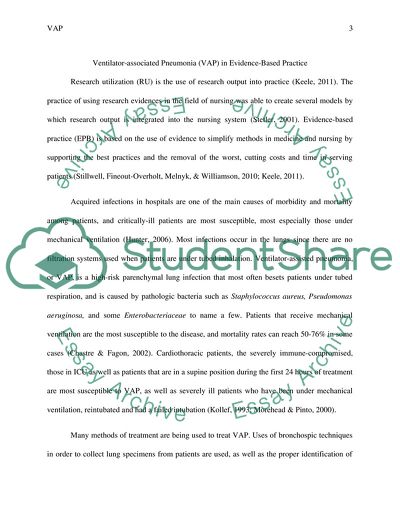PICO QUESTION:TOPIC- Ventilator Associated pneumonia Research Paper. https://studentshare.org/medical-science/1779305-ventilator-associated-pneumonia-in-evidence-based-practice
PICO QUESTION:TOPIC- Ventilator Associated Pneumonia Research Paper. https://studentshare.org/medical-science/1779305-ventilator-associated-pneumonia-in-evidence-based-practice.


